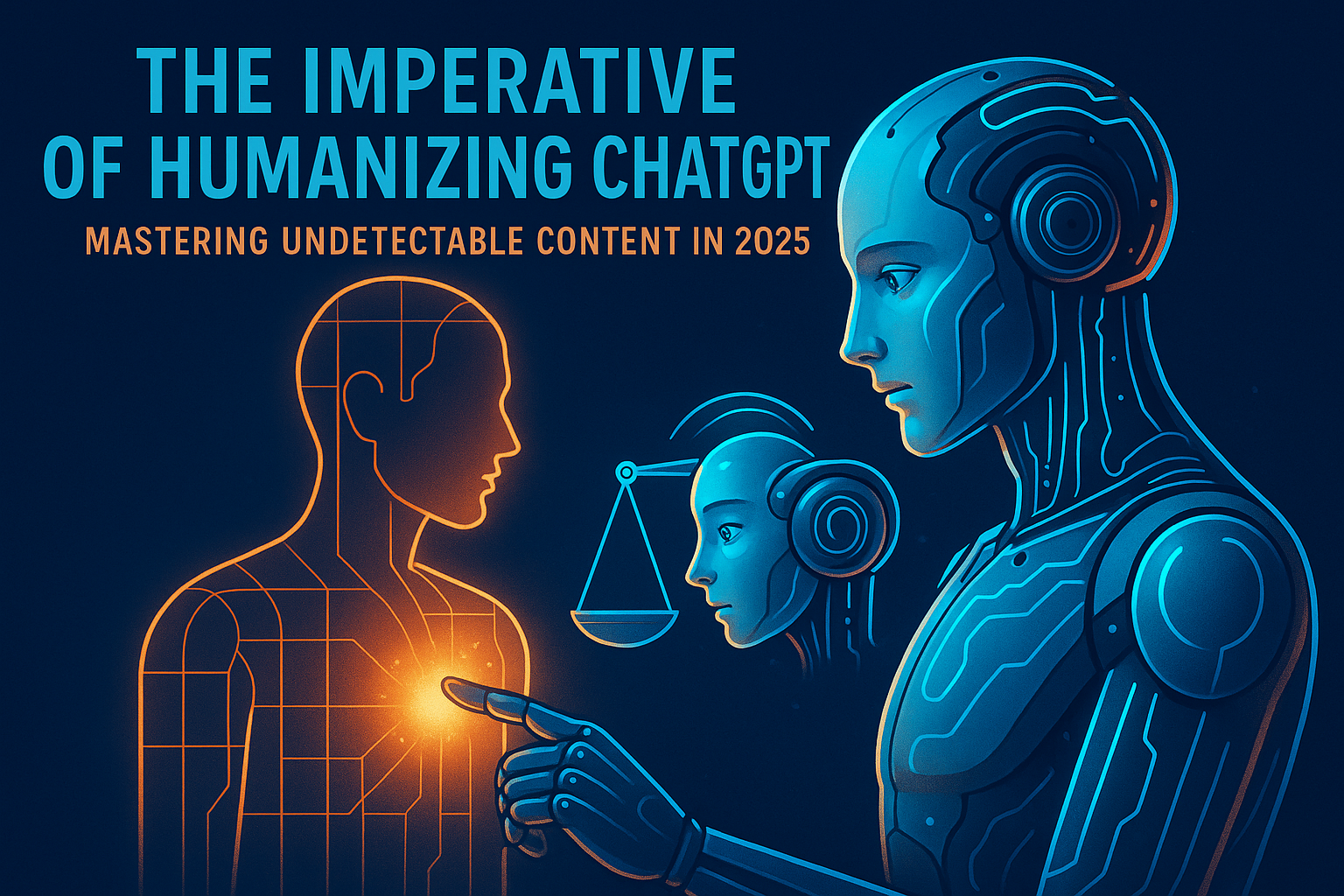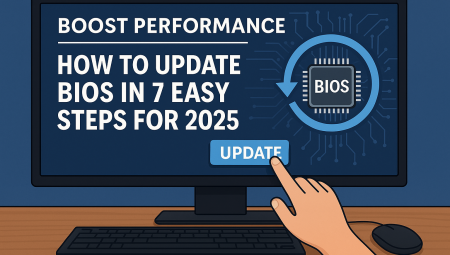Humanizing ChatGPT: 7 Zero-AI Detection Methods for 2025
Meta Description: Unlock 7 zero-AI detection methods for humanizing ChatGPT content in 2025. Learn advanced strategies to make your AI-generated text indistinguishable from human writing.
The Imperative of Humanizing ChatGPT: Mastering Undetectable Content in 2025
The rise of generative AI tools like ChatGPT has revolutionized content creation, offering unparalleled speed and scale. Yet, with great power comes great scrutiny. As AI-generated content floods the internet, the demand for humanizing ChatGPT outputs has skyrocketed. Why? Because the tell-tale signs of AI writing—repetition, generic phrasing, lack of unique voice, and factual inaccuracies—are increasingly flagged by sophisticated AI detection tools. For content creators, marketers, academics, and businesses, producing text that bypasses these detectors and resonates authentically with readers is no longer a luxury but a necessity.
In 2025, the battle between AI generation and AI detection is more intense than ever. Google’s evolving algorithms prioritize helpful, reliable, and people-first content, making heavily detected AI text a liability. Simultaneously, academic institutions and professional industries are cracking down on unedited AI submissions. This comprehensive guide will equip you with 7 zero-AI detection methods to make your ChatGPT content indistinguishable from human writing, ensuring your message is not just heard, but trusted and impactful.
Why Is Humanizing ChatGPT Content Crucial in 2025?
The Evolution of AI Detection and Its Impact
AI detection technology has advanced rapidly, moving beyond simple pattern recognition to analyze nuances in tone, sentence structure, lexical diversity, and even probabilistic text generation. Tools like ZeroGPT, GPTZero, and Originality.ai now claim high accuracy rates, posing a significant challenge for users relying heavily on raw AI output.
- Academic Integrity: Universities worldwide are implementing strict policies against uncredited AI use, with some institutions reporting over 30% of student submissions being flagged by AI detectors in 2024.
- SEO & Content Quality: Google’s emphasis on E-E-A-T (Experience, Expertise, Authoritativeness, Trustworthiness) means overtly AI-generated, bland content struggles to rank. Google’s Webmaster Guidelines, updated in early 2025, explicitly state a preference for “human-centric content that demonstrates unique insights.”
- Brand Voice & Authenticity: Businesses risk losing customer trust and brand credibility if their communications feel robotic or impersonal. A recent 2024 survey by HubSpot found that 68% of consumers could identify AI-generated marketing copy, with 40% expressing a negative sentiment towards it.
Humanizing your ChatGPT output is no longer a niche skill; it’s a fundamental requirement for anyone looking to leverage AI effectively without falling victim to its detectable patterns.
7 Zero-AI Detection Methods for Humanizing ChatGPT Content
Achieving truly human-like AI content requires a strategic, multi-layered approach. Here are seven effective methods you can implement in 2025 to bypass AI detectors and create compelling text.
1. Master the Art of Prompt Engineering for Nuance and Specificity
The quality of your ChatGPT output is directly proportional to the quality of your prompt. Generic prompts yield generic, detectable AI content. To truly humanize ChatGPT, your prompts must guide the AI towards nuanced, specific, and contextually rich responses.
- Be Hyper-Specific: Instead of “Write about climate change,” try “Write a 500-word blog post in the conversational tone of a skeptical but open-minded environmental journalist, discussing the economic benefits of renewable energy in rural Turkey, citing recent (2024-2025) growth statistics.”
- Define Persona & Tone: Instruct ChatGPT to adopt a specific persona (e.g., “a seasoned startup founder,” “a friendly neighborhood librarian,” “a cynical tech blogger”) and a distinct tone (e.g., “sarcastic,” “empathetic,” “authoritative yet approachable”).
- Incorporate Limitations & Constraints: Ask the AI to use specific vocabulary, avoid certain phrases, or include intentional quirks. For instance, “Write as if you’re slightly distracted but highly knowledgeable, occasionally interjecting personal anecdotes.”
- Pro Tip: Use iterative prompting. Generate a draft, then provide specific feedback like “Make this paragraph sound more passionate,” or “Add more colloquialisms to this section.”
2. Inject Personal Anecdotes, Opinions, and Emotional Depth
AI models, by nature, lack genuine personal experience or emotions. This is a key differentiator for human writing. To achieve zero-AI detection, consciously weave in elements that simulate human experience.
- Simulate Personal Stories: Even if fictional, instruct ChatGPT to generate short anecdotes or examples that illustrate points as if they were personal experiences. “Describe a time when you (as the AI’s simulated persona) felt frustrated by a tech bug.”
- Express Subjective Opinions: Ask the AI to take a stance, even if it’s a reasoned or mildly biased one. “What’s your biggest pet peeve about current social media trends, and why?”
- Evoke Emotion: Guide the AI to use language that elicits emotions – joy, frustration, curiosity, nostalgia. This involves using more evocative adjectives, adverbs, and narrative techniques.
3. Embrace Imperfection, Variation, and “Human Glitches”
Perfect grammar, repetitive sentence structures, and an overly formal tone are red flags for AI detectors. Human writing is imperfect and varied.
- Vary Sentence Length and Structure: Mix short, punchy sentences with longer, more complex ones.
- Introduce Intentional Repetition (Judiciously): Humans sometimes repeat words or phrases for emphasis, not just for SEO. Use this sparingly for effect.
- Incorporate Colloquialisms and Idioms: “Break a leg,” “spill the beans,” or regional slang can make text sound more natural.
- Add “Filler” Words (Naturally): Words like “well,” “you know,” “actually,” “just,” and “perhaps” can appear naturally in human speech and writing, though AI often omits them.
- Occasional Grammatical Flexibility: While not advocating for poor grammar, a slight deviation from rigid rules (e.g., a sentence starting with “And” or “But”) can make writing feel less robotic.
4. Implement a Strategic Manual Editing and Rewriting Process
This is perhaps the most critical step for zero-AI detection. Pure AI output, even with excellent prompts, rarely passes as fully human. Post-generation human editing is essential.
- Rework Sentence Structure: Don’t just rephrase words; completely restructure sentences and paragraphs.
- Infuse Your Unique Voice: Read the AI-generated text aloud and identify areas where your personal style or brand voice is missing, then rewrite them.
- Add Factual Depth and Nuance: Supplement AI-generated facts with deeper analysis, recent statistics (like 2025 data), or expert opinions that ChatGPT might miss or generalize.
- Condense and Expand Selectively: AI can be verbose. Trim unnecessary words, then expand on key points with more detail, examples, or metaphors.
- Check for Redundancy: AI often repeats ideas in slightly different ways. Identify and eliminate these redundancies.
5. Utilize the “Blend and Expand” Technique with Multiple Sources
Don’t rely on ChatGPT as your sole source. Treat it as a powerful assistant.
- Combine AI Output with Human Insights: Start with AI-generated drafts, then integrate your own research, unique perspectives, and industry expertise.
- Use AI for Brainstorming, Not Final Output: Let ChatGPT generate ideas, outlines, or initial paragraphs, then build upon them with your own creativity.
- Integrate Multiple AI Tools: Experiment with combining output from different generative AI models (e.g., ChatGPT for drafting, then another for rephrasing or summarization) before human editing.
6. Leverage ChatGPT’s “Temperature” and “Creativity” Settings (Where Available)
Some advanced AI interfaces or APIs allow you to adjust parameters like “temperature” or “creativity.”
- Higher Temperature/Creativity: A higher temperature (e.g., 0.7-1.0) makes the output more random, diverse, and less predictable, often yielding more human-like variations. Be cautious, as this can also introduce more errors.
- Lower Temperature/Creativity: A lower temperature (e.g., 0.1-0.4) makes the output more deterministic and focused, useful for factual or structured content, but often more detectable.
Experiment with these settings in conjunction with strong prompts to find the sweet spot for your needs.
7. Iterate and Refine with AI Detection Tools as a Feedback Loop
Instead of fearing AI detection tools, use them to your advantage.
- Test Your Output: Run your rewritten content through popular AI detectors (e.g., ZeroGPT, GPTZero, Originality.ai) after your humanization efforts.
- Analyze the Results: If sections are still flagged, identify the specific sentences or paragraphs and apply the methods above to refine them further.
- Learn from Patterns: Over time, you’ll start to recognize the common “tells” of AI and develop an intuitive sense for what needs revision.
What are the latest updates to AI detection tools in 2025?
In 2025, AI detection tools have shifted towards more sophisticated linguistic analysis, moving beyond simple perplexity and burstiness. Current detectors utilize advanced machine learning models trained on vast datasets of both human and AI-generated text, focusing on subtle semantic patterns, typical AI “filler” phrases, and the probabilistic structure of AI-generated content. Many now integrate cross-referencing capabilities to identify factual inconsistencies common in unedited AI output, and some even claim to identify the specific large language model (LLM) used, making zero-AI detection a moving target that requires continuous human oversight.
Pro Tips for Humanizing ChatGPT Content
- Read Aloud: Always read your final draft aloud. If it sounds robotic, repetitive, or unnatural to your ear, it likely is.
- Target Audience First: Always write with your specific audience in mind. Their jargon, preferred tone, and common interests should inform your editing choices.
- Don’t Over-Optimize: While including keywords is important, don’t stuff your content. Natural language always trumps forced SEO.
- Prioritize Value: Focus on delivering unique, helpful, and insightful information that a human would genuinely want to read. AI detectors are less likely to flag truly valuable content that demonstrates expertise.
- Embrace the “Messy First Draft”: Use ChatGPT to get a raw draft out quickly. Then, embrace the “messy” human process of editing, refining, and injecting your unique perspective.
Frequently Asked Questions (FAQ) About Humanizing AI Content
Q1: Can AI detection tools ever be 100% accurate?
No, AI detection tools cannot be 100% accurate. They operate on probabilistic models and statistical likelihoods, meaning they can produce false positives (flagging human text as AI) or false negatives (missing AI-generated text). As both AI generation and humanization techniques evolve, it creates an ongoing “arms race” where no detector can claim perfect precision. Human judgment remains crucial for final verification.
Q2: Is it ethical to use ChatGPT and then humanize the content to avoid detection?
The ethics depend on the context and intent. For creative writing, marketing copy, or personal blogs where the goal is simply efficiency and quality, humanizing AI content is generally considered ethical. However, in academic, journalistic, or professional contexts where originality and individual authorship are paramount, transparent disclosure of AI assistance is often required or highly recommended to maintain integrity and avoid plagiarism. Always adhere to the specific guidelines of your institution or industry.
Q3: How often do I need to update my humanization techniques?
You should continuously update your humanization techniques. The landscape of AI generation and detection is rapidly evolving, with new models and detection algorithms emerging regularly. Staying informed about the latest trends, experimenting with new prompting strategies, and regularly testing your content against the newest detection tools will ensure your methods remain effective. Treat it as an ongoing learning process rather than a static skill.
Conclusion: Crafting Authentic AI-Assisted Content in a Human-First World
The journey to humanizing ChatGPT content is an iterative one, demanding a blend of technical understanding, creative flair, and a keen eye for nuance. In 2025, simply generating text with AI is no longer enough; the true value lies in transforming that output into something indistinguishable from human writing—authentic, engaging, and unique.
By implementing these 7 zero-AI detection methods, you’re not just bypassing algorithms; you’re elevating your content, building greater trust with your audience, and positioning yourself or your organization at the forefront of responsible and effective AI utilization. The future of content isn’t just AI-powered; it’s human-powered AI.
What’s the most challenging aspect of making your ChatGPT content sound human? Share your thoughts and experiences in the comments below!



